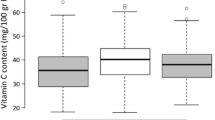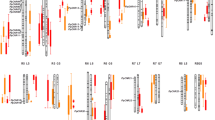Abstract
Fruit size and shape are two major factors determining yield, quality and consumer acceptability for many crops. Like most traits important to agriculture, both are quantitatively inherited. Despite their economic importance none of the genes controlling either of these traits have been cloned, and little is known about the control of the size and shape of domesticated fruit. Tomato represents a model fruit-bearing domesticated species characterized by a wide morphological diversity of fruits. The many genetic and genomic tools available for this crop can be used to unraveal the molecular bases of the developmental stages which presumably influence fruit architecture, size and shape. The goal of this review is to summarize data from the tomato QTL studies conducted over the past 15 years, which together allow the identification of the major QTLs responsible for fruit domestication in tomato. These results provide the starting point for the isolation of the genes involved in fruit-size/shape determination in tomato and potentially other fruit-bearing plants.
Similar content being viewed by others
Author information
Authors and Affiliations
Additional information
Received: 21 January 1999 / Accepted: 12 March 1999
Rights and permissions
About this article
Cite this article
Grandillo, S., Ku, H. & Tanksley, S. Identifying the loci responsible for natural variation in fruit size and shape in tomato. Theor Appl Genet 99, 978–987 (1999). https://doi.org/10.1007/s001220051405
Issue Date:
DOI: https://doi.org/10.1007/s001220051405




